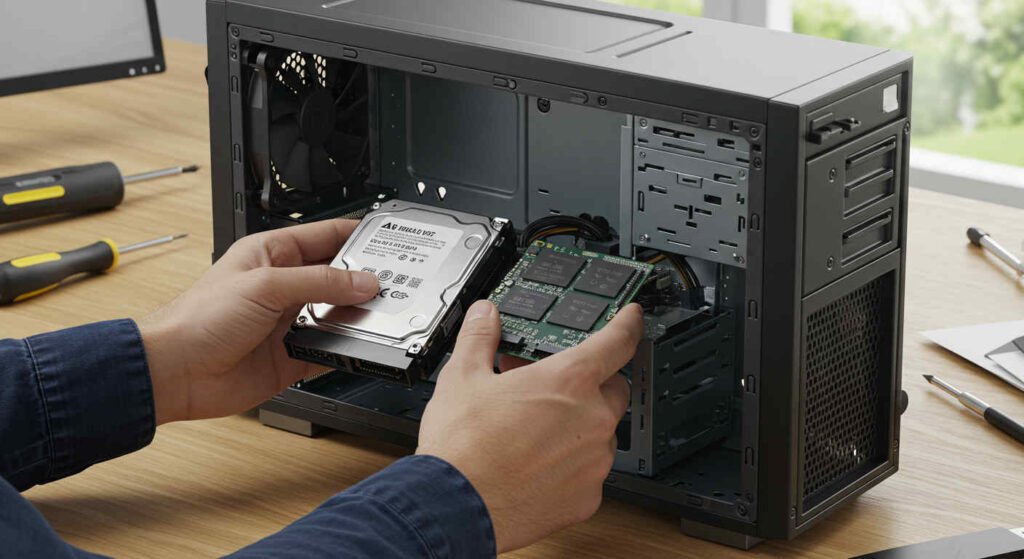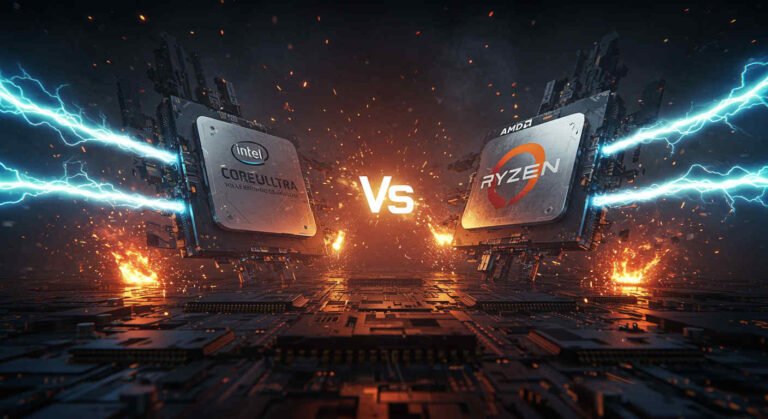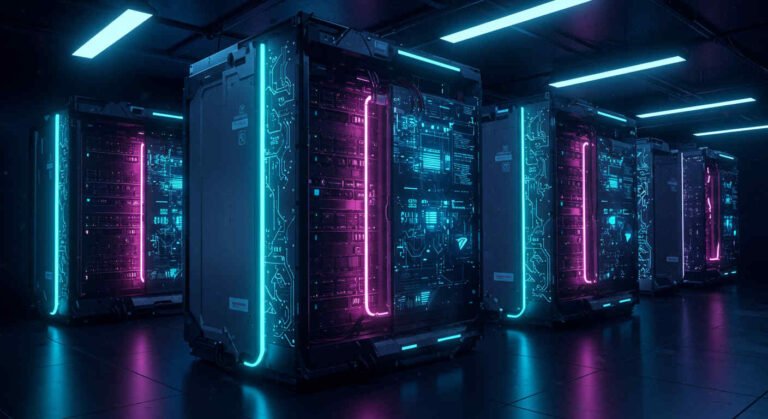Modular PCs: Upgrading Your Rig Without Emptyin’ Your Wallet
Table of Contents
Introduction
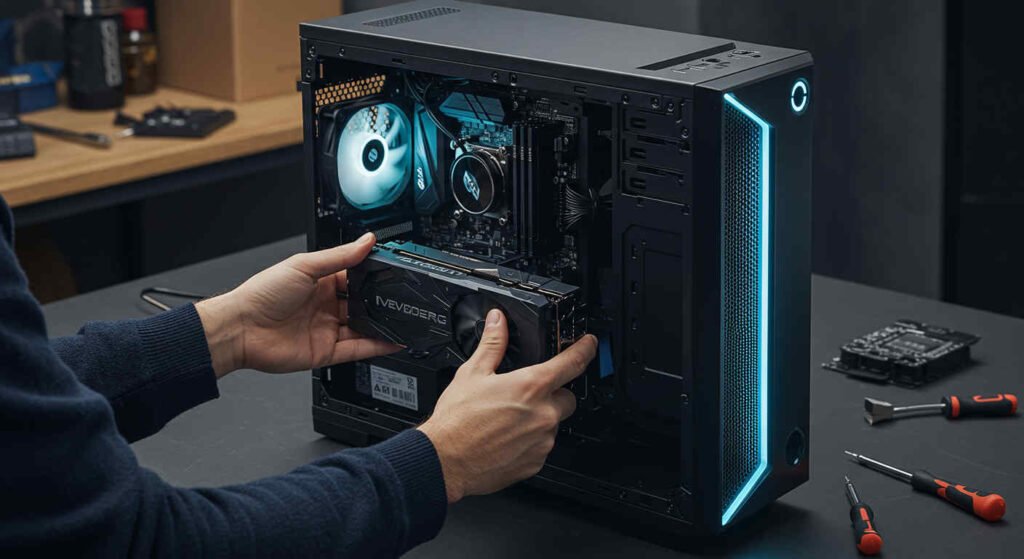
Alright, folks, grab a soda and settle in, ‘cause we’re divin’ headfirst into the buzzin’ world of modular PCs—a real game-changer that’s got tech geeks grinning like kids in a candy store. Imagine a computer you can tweak faster than a racecar pit stop, keepin’ your rig runnin’ smooth as butter without burnin’ a hole in your pocket.
In 2025, with tech zoomin’ faster than a jackrabbit on a sugar rush, modular PCs are stealin’ the show, promisin’ a future where upgradin’ your setup’s as easy as flippin’ a switch. Holy smokes, brands like Framework and Intel are wavin’ the flag for designs that let you swap CPUs, GPUs, or RAM like poppin’ Legos together, all while sidesteppin’ the e-waste junkyard. This ain’t just a trend—it’s a fist raised against toss-it-all nonsense, a wink at a tomorrow where your PC sticks by you like a faithful mutt. So, let’s kick the tires, crank the engine, and see why modular PCs are the new kid on the block, hummin’ with dreams of a world where upgradin’s a breeze.
The Upgrade Woes: Why Old PCs Make You Cry (and Broke)
Let’s get real—upgradin’ a regular PC can feel like wrestlin’ a hog in mud. You’ve got a rig that’s chuggin’ along, maybe a couple years old, and now it’s wheezin’ like an old dog tryin’ to run the latest games or edit that fancy 4K video. So, you pop the hood, ready to give it some juice, only to find your motherboard’s older than a flip phone, and that shiny new CPU needs a whole new socket.
Darn it, now you’re forkin’ out for a new motherboard, maybe new RAM, and—oops—your power supply’s weaker than a limp noodle. Next thing you know, you’ve shelled out enough for a beat-up truck, and your old parts are sittin’ in a corner like forgotten toys.
The kicker’s saltier than a pretzel: PCs are supposed to be your playground, but upgradin’ one part often means rippin’ out the whole dang thing. Desktops are kinda friendly, lettin’ you swap GPUs or RAM like changin’ a tire, but laptops and mini-PCs? Forget it. They’re glued tighter than a clam’s shell, with RAM and CPUs that mock your screwdriver. And here’s the real sting: every time you chuck a good rig ‘cause one part’s toast, you’re pilin’ up e-waste faster than dirty socks in a dorm room. It’s a cash-drainin’, earth-chokin’ mess that’s got folks madder than a wet hen, settin’ the stage for modular PCs to ride in like a hero on a white horse.
Modular PCs: The Cool New Sheriff in Town
Hold onto your hats—modular PCs are turnin’ the game upside down, and they’re slicker than a whistle. Unlike old-school rigs, where parts are stuck together like a bad glue job, modular PCs are like a puzzle you can mix and match. Picture ‘em as the Swiss Army knife of tech: you can swap the CPU, GPU, RAM, or storage without breakin’ a sweat or your piggy bank.
Companies like Framework are leadin’ the pack, buildin’ laptops where you can slide in a new mainboard or switch ports like tradin’ baseball cards. Intel’s in on it too, cookin’ up mini-PCs and laptops split into chunks—like a CPU board, a GPU board, and a hub tyin’ ‘em together—makin’ upgrades as simple as pluggin’ in a lamp.
This ain’t just about makin’ life easy; it’s a love song to keepin’ your rig alive. A modular PC stretches its legs with you, whether you’re blastin’ through games like a pro or crunchin’ numbers like a math nerd. Take the Framework Laptop 13—it lets you swap the mainboard for a newer chip, keepin’ your rig fresh as a daisy without tossin’ the whole enchilada. And get this: Intel’s pitchin’ designs where laptop motherboards split into smaller boards, linked by cables, so you can upgrade one piece without gutting the rest. It’s like givin’ your PC a new spark plug instead of a full overhaul, whisperin’ of a future where your rig’s as bendy as a yoga teacher.
Framework’s Big Win: A Laptop That’s All Ears
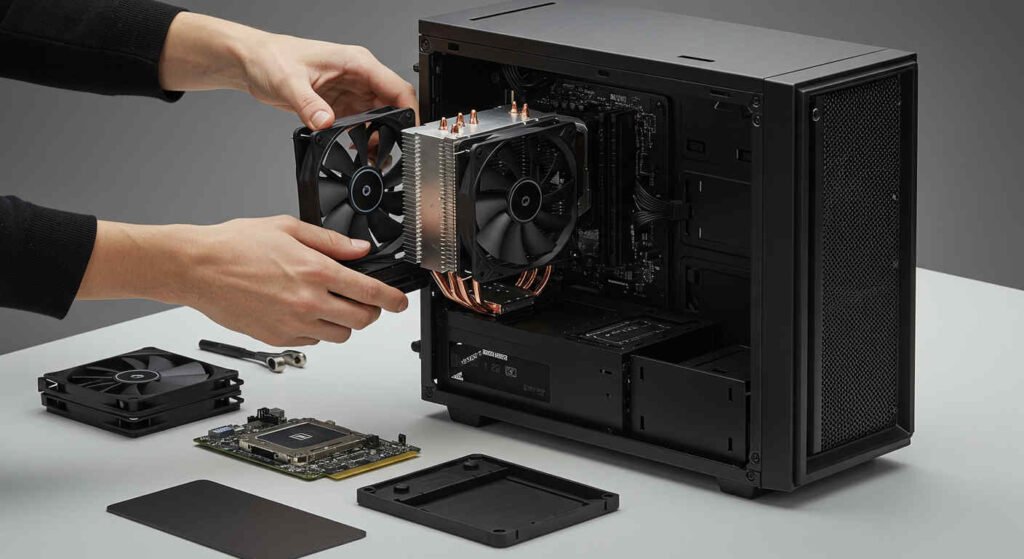
Let’s shine a spotlight on Framework, the scrappy champ that’s shakin’ things up like a storm in a teacup. Their Laptop 13 is a modular wonder, built to be tinkered with easier than a kid’s toy set. Weighin’ just 2.9 pounds and thinner than a short stack of pancakes, it’s powered by Intel Core Ultra or AMD Ryzen 7040 chips, with Geekbench 6 multi-core scores around 10,000—plenty of pep for gaming, editin’, or scrollin’ X like a hawk. But here’s the real magic: every part’s upgradable. Swap the mainboard for a newer CPU, pop in more RAM, or trade a USB-C port for an HDMI one quicker than you can say “zip zap.”
The secret sauce? Framework’s mainboard slides out like a breeze, and their modular ports—called Expansion Cards—let you pick your setup like choosin’ ice cream flavors. Need an extra SSD? Slot it in, no fuss. Want a sharper display? Unscrew and upgrade. It’s a big ol’ “take that” to the “buy a new laptop every three years” trap, and the cherry on top? Framework’s open-source vibe means they share repair guides and sell parts straight-up, so you’re not diggin’ through eBay like a scavenger. This laptop’s a badge of freedom, a nod to a future where you call the shots, not some suit in a boardroom.
But it ain’t all sunshine and rainbows. Framework’s laptops start at $1,049, which ain’t pocket change, and their gaming power’s a bit shy compared to rigs with beefy GPUs. Plus, the DIY vibe might scare off folks who’d rather not mess with their laptop’s innards. Still, Framework’s blazin’ a trail, showin’ giants like Dell and ASUS how it’s done, and their upcoming Framework Desktop—a modular mini-PC—promises to bring the same spunk to your desk, hintin’ at a world where every PC’s as flexible as a rubber band.
Intel’s Big Plan: Breakin’ the Motherboard Apart
Now, let’s give a shoutout to Intel, who’s stirrin’ up something hotter than a summer barbecue. They’re pushin’ a modular dream for laptops and mini-PCs that’s got techies buzzin’ like bees. Instead of one big, clunky motherboard, Intel’s splittin’ it into three pieces: a CPU module, a GPU module, and a Platform Controller Hub (PCH) module that ties ‘em together like a digital knot. Need more power? Pop in a new CPU board. Want better graphics? Swap the GPU module—bam, your rig’s ready to roll without replacin’ the whole kit.
For mini-PCs, Intel’s plan’s pure gold. These tiny boxes are usually locked up tighter than a safe, but Intel’s design lets you upgrade parts like changin’ batteries in a flashlight. Their example packs a 600-watt power supply and hot-swappable NVMe SSDs, feelin’ like a mini tower PC with all the bells and whistles. For laptops, they’re proposin’ two IO modules linked by flexible circuits, reusable across different sizes and models, from lightweight 10W systems to dual-fan 30W monsters. It’s a toast to efficiency, cuttin’ down on e-waste and costs while lettin’ you tweak your rig like a gearhead with a hot rod.
The twist’s juicier than a peach: Intel, once the poster child for rigid designs, is now preachin’ modularity like a tech guru. But here’s the hitch—Intel’s just floatin’ ideas, and it’s up to brands like ASUS or Acer to make ‘em real. Will they jump in? Only time’ll tell, but the hum around Intel’s plans is a spark, lightin’ a path to a future where laptops and mini-PCs are as upgradable as desktops, singin’ with possibility.
Why Modular PCs Save Your Cash and the Planet
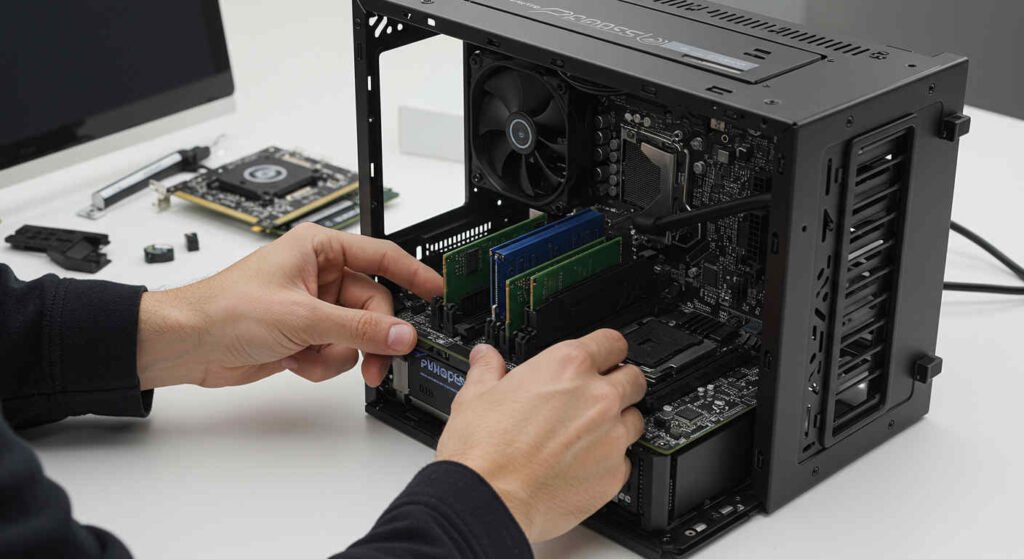
Let’s talk straight—modular PCs are a one-two punch, keepin’ your wallet fat and givin’ the Earth a big bear hug. First off, they’re easier on your bank account in the long haul. Instead of droppin’ $1,500 on a new laptop when your CPU’s old news, you might spend $200 on a new mainboard or $100 on extra RAM. Framework’s mainboards start at $349, and their Expansion Cards go as low as $19, lettin’ you upgrade on a budget tighter than a banjo string. Compare that to a new MacBook Air M4, startin’ at $999, and modular rigs are like findin’ money in your couch.
Then there’s the planet-lovin’ side. E-waste’s a growin’ monster, with 50 million tons stackin’ up every year, and tossin’ out whole PCs ‘cause one part’s fried is like chuckin’ a car ‘cause the wipers quit. Modular PCs let you fix just what’s broke, keepin’ the rest out of the dump. Framework’s repairable design and Intel’s modular mini-PCs are like a recyclin’ bin for your rig, slashin’ waste faster than a lawnmower through grass. It’s a green dream, a glimpse of a future where tech’s as eco-friendly as a sunny meadow.
And there’s more! Modular PCs are a tinkerer’s paradise. Wanna try a RISC-V mainboard for fun? Framework’s got one for $199, perfect for coders or hobbyists who nerd out on open-source gear. Need more storage for your Steam games? Pop in a new SSD like it’s nothin’. This flexibility’s a big “no way” to the “planned obsolescence” scam, where companies build gear to croak just as the warranty’s done, nudgin’ you toward a future where your PC’s as trusty as an old pickup.
The Hiccups: Why Modular Ain’t Takin’ Over Yet
Now, don’t get too excited—modular PCs got some fences to hop, like a cow at a rodeo. For one, they’re rarer than hen’s teeth. Framework’s the main player, but big names like Dell or HP are movin’ slower than molasses, stickin’ to soldered designs like a toddler with a blankie. Why? Cash rules, and sellin’ whole new laptops rakes in more dough than peddlin’ parts. Plus, modular designs can cost more to build, needin’ connectors and casings that jack up prices like gas in a crisis.
Then there’s the tech hurdle. Modular parts gotta play nice across years, but CPU sockets change faster than TikTok trends—Intel’s LGA1700 won’t fit Arrow Lake chips, and AMD’s AM4’s fadin’ like a forgotten tune. Makin’ modules that last multiple generations is like wranglin’ kittens, and if brands don’t agree on standards, you’re stuck with parts that lock you in like a bad lease. And let’s be honest—some folks wouldn’t touch their PC’s guts with a ten-foot pole, no matter how simple Framework makes it. They’d rather buy new than grab a screwdriver, like choosin’ pizza over cookin’.
The irony’s sharper than a cactus: modularity’s been a desktop staple forever, yet laptops and mini-PCs are only now catchin’ up, even with tech leapin’ forward like a rocket. These hiccups are like rain on a picnic, but they ain’t stoppin’ the modular train—just slowin’ it down.
The Big Picture: A Modular Dream or Just Hot Air?
So, what’s the deal? Modular PCs are like a seed takin’ root in 2025, with Framework and Intel pourin’ water, but it’s gonna need time to grow. If big brands hop on, we could see laptops and mini-PCs as swappable as desktops, lettin’ you trade parts like candy at Halloween. Picture a world where you buy a $1,000 laptop and keep it kickin’ for ten years, upgradin’ the CPU every few for a couple hundred bucks, or a mini-PC that grows with your gaming needs without needin’ a new box. It’s a tech paradise, a promise of a future where your rig’s as lastin’ as grandma’s quilt.
But there’s a dark side. If manufacturers don’t bite, modularity could stay a sidekick, like flip phones in a smartphone world. Locked-down designs and profit hunger could keep laptops sealed tight, forcin’ you to buy new rigs like clockwork. And if standards don’t stick, you’re left with a jumble of parts that don’t fit, like tryin’ to force a puzzle piece where it don’t belong. The signs are clear: the next few years’ll decide if modular PCs soar or stall, with companies like ASUS or Lenovo choosin’ whether to follow Framework’s lead or cling to the old ways.
For now, modular PCs are a flicker, lightin’ up the tech world with hope. Framework’s Laptop 13 and Desktop prove you can build a rig that’s fixable, upgradable, and kind to the planet, while Intel’s modular ideas hint at a bigger shake-up. They’re a rebel yell against throwaway tech, a call for tinkerers and penny-pinchers to dream big. So, if you’re itchin’ to upgrade without breakin’ the bank, keep your eyes on modular PCs—they’re hummin’ with promise, ready to carry your rig into a future where tech’s as stretchy as a slinky and as green as a forest trail.
See this another good article in our internal links: https://techforgewave.com/best-budget-laptops-ultimate-tech-deals-for-2025/
See this good external article: https://moderngamer.com/best-budget-gaming-pc-components-2025/
